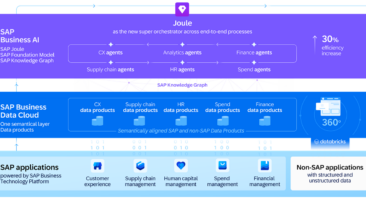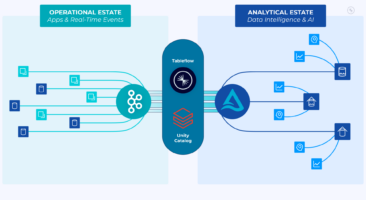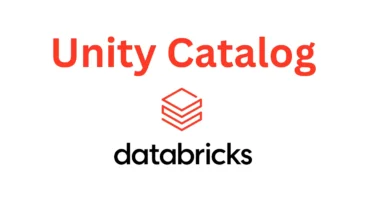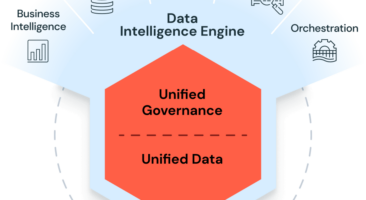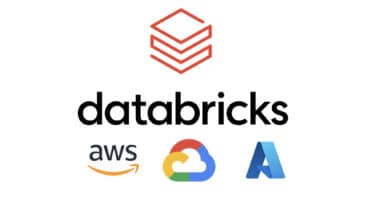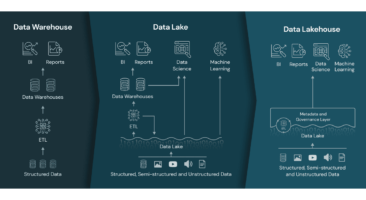A Unified View of Your Data: Exploring the Benefits of Data Integration
As an IT decision-maker, you understand the importance of data integration for your organization. Combining data from various sources into a unified view allows you to gain valuable insights and make informed decisions. We will explore the benefits of data integration, methods to achieve it, and the challenges that come with it.
What is Data Integration?
Data integration refers to combining data from different sources and making it accessible through a unified view. It is crucial in resolving data silos and fragmentation issues that often plague organizations, causing inefficiencies and hindering growth. By integrating disparate data sources, businesses can gain better insights into their operations, automate processes, improve decision-making capabilities, and ultimately drive success.
Data integration is crucial in resolving data silos and fragmentation issues that often plague organizations, causing inefficiencies and hindering growth.
Achieving effective data integration requires careful planning and execution of various technical processes that seamlessly merge information across systems. Properly implemented integrations ensure secure real-time access to accurate information while enhancing collaboration among organizational stakeholders.
Data Silos and Fragmentation
Managing fragmented data sources can pose significant challenges for organizations. It often results in data silos, where different teams or departments have access only to their subset of information, hindering collaboration and productivity. The negative impact on productivity due to these silos is a common issue that businesses face daily.
Furthermore, generating meaningful insights from disconnected data becomes increasingly difficult as the amount of available information grows. Without integration and an improved process for accessing all relevant data points, decision-makers may miss critical insights from otherwise valuable information sets.
Addressing these issues requires carefully considering how best to integrate various sources of information into a unified view through the effective use of technology solutions. In doing so, IT decision-makers can more easily identify critical trends and patterns across disparate datasets while enabling greater collaboration, driving tremendous success overall.
The Need for Data Integration
In today’s fast-paced business environment, gaining access to real-time and accurate information is crucial. This increasing demand for instant data has led to the need for robust data integration solutions that can streamline processes and improve operational efficiencies. With this in mind, businesses are turning towards integrating their data sources into a unified view to ensure easy access to timely insights.
Furthermore, as the importance of business intelligence and analytics grows, it becomes even more critical for organizations to have integrated data systems. Data silos result in fragmented information that cannot be used effectively without time-consuming manual processing or manipulation. Therefore, IT decision-makers can help unlock the full potential of their organization’s data resources by embracing integration technologies such as process automation tools and efficient data warehousing practices.
Benefits of Data Integration
Integrating data from various sources into a unified view can significantly improve the quality of your business data. By consolidating disparate sources and removing redundancies, you can ensure that your organization has accurate and up-to-date information to work with. As a result, it improves decision-making and enhances operational efficiency by reducing errors and redundancy.
Data integration also provides better business insights by enabling cross-functional analysis of data. With all relevant data in one place, organizations can gain a complete picture of their operations and identify trends or anomalies that would have otherwise gone unnoticed. This holistic approach to analyzing business performance leads to more informed decisions, improved resource allocation, and increased profitability.
Improved Data Quality
Elimination of duplicate records is a critical step in achieving accurate data integration. Duplicate records can lead to confusion and errors, ultimately negatively impacting business decisions. By implementing automated processes that identify and merge duplicate records, data quality improves significantly.
Consistent data formatting and naming conventions are essential for effectively integrating disparate sources into a single repository. Data with varying formats or inconsistent naming conventions can be challenging to integrate accurately, leading to data discrepancies that skew analysis results. Therefore, standardizing these aspects ensures smoother integration of the various datasets.
Enhanced accuracy through data cleansing ensures optimal alignment with business objectives by correcting inconsistencies within the dataset. This process corrects inaccuracies caused by human error or outdated information while eliminating irrelevant or incomplete information from the dataset, resulting in more reliable insights for informed decision-making for your organization.
Better Business Insights
Companies need a comprehensive view of their customers, products, and operations to make informed business decisions. With data integration, businesses can create a 360-degree view that considers all the relevant information from various sources. It helps identify trends and patterns to make better-informed business decisions.
In addition to improved insights, data integration provides real-time access to critical information for timely actions. Decisions can be made faster as the most up-to-date information is available instantly. By integrating data from different sources in real time, companies gain a competitive edge by making quicker and more accurate decisions based on current market conditions.
Increased Efficiency and Productivity
Automated data integration processes are revolutionizing manual labor by reducing the time and effort required to integrate disparate datasets. Data silos, once a nightmare for IT departments, can now be easily bridged with automated tools that provide seamless integration between different data sources. It leads to reduced errors and faster access to integrated data sources that provide real-time insights.
Streamlined workflows across departments enable organizations to save costs while increasing productivity. Companies can reduce their reliance on human intervention in these processes by automating tasks such as data entry, extraction, transformation, and loading (ETL). Automation also reduces the risk of errors associated with manual input or processing of information, leading to improved accuracy and quality of output.
The combination of automated data integration processes and streamlined workflows significantly reduces time-to-insight for users across all functions within an organization. With faster access to accurate insights from integrated datasets comes more informed decision-making, ultimately leading to increased efficiency and productivity throughout the enterprise.
Methods of Data Integration
Data integration is necessary for organizations to combine data from multiple sources into a unified view. One data integration method is through manual processes like copying and pasting or importing/exporting data. Although this method is low-cost, it can be time-consuming and prone to errors.
Another approach to data integration involves using middleware technology, which automates the process of extracting, transforming, and loading (ETL) data between systems. This method reduces the risk of human error while increasing efficiency and accuracy in managing large volumes of disparate data sources. Cloud-based solutions also benefit organizations seeking scalable, cost-effective options for securely integrating their diverse datasets across various platforms.
Manual Data Integration
Manual data integration is a time-consuming and error-prone process that can hinder the growth of any organization. However, it remains necessary for many businesses that rely on multiple disconnected systems to store their information. Here are some challenges of manual data integration:
- Increased risk of errors
- Time-intensive and laborious
- Unreliable and inconsistent results
Fortunately, automating manual data integration can help businesses overcome these challenges while simultaneously unlocking several benefits, such as:
- Improved accuracy and consistency
- Reduced processing times
- Enhanced productivity
To streamline manual data integration processes, organizations should consider implementing tools such as:
- Data mapping software
- ETL (extract, transform, load) tools
These solutions can significantly improve the speed and efficiency with which your team integrates various datasets.
By automating this crucial aspect of business operations with modern technology solutions like those mentioned above, companies can achieve better outcomes in less time while freeing up their staff to focus on more strategic initiatives.
Middleware Data Integration
Middleware Data Integration is using middleware software to connect disparate systems and databases. This approach simplifies integrating data from various sources, enabling businesses to access a unified view of their data. In addition, middleware acts as an intermediary layer between applications, providing a standardized way for them to communicate with each other.
Benefits of Middleware Data Integration include:
- Improved efficiency and productivity through automation
- Reduced errors and increased accuracy in data handling
- Greater flexibility when it comes to adding or modifying integrations
- Increased visibility into business processes
Some popular examples of middleware solutions for enterprise-level integrations include MuleSoft Anypoint Platform, IBM WebSphere MQ, and Microsoft BizTalk Server. These tools provide robust API management, messaging services, and workflow automation features. By leveraging these robust middleware solutions, businesses can achieve seamless integration across their entire IT infrastructure.
Cloud-Based Data Integration
Cloud-based data integration offers numerous advantages and disadvantages. On the one hand, cloud-based solutions facilitate scalability, flexibility, and collaboration among teams. However, on the other hand, security concerns surround using public cloud platforms in ETL operations.
Advantages and Disadvantages of Cloud-Based Solutions:
- Advantages:
- Scalability: Easily scale up or down based on business needs
- Flexibility: Access from anywhere with an internet connection
- Collaboration: Enable multiple team members to work together remotely
- Disadvantages:
- Security risks associated with public cloud platforms
- Dependence on solid internet connectivity for access
How Cloud-Based Options Facilitate Scalability, Flexibility, and Collaboration Amongst Teams:
- Improved agility in resource allocation due to easy scaling up or down.
- Enables remote working due to accessibility through a web interface.
- Real-time updates allow teams distributed across locations/countries/geographies to contribute effectively.
Security Concerns Surrounding the Use of Public Cloud Platforms in ETL Operations:
- Data breaches can lead to the loss of critical information.
- Privacy laws may not be universal; different geographies have varying requirements around data privacy, which can pose challenges when using public clouds.
- Vulnerabilities posed by third-party contractors who maintain these systems.
As IT decision-makers seek out more efficient ways of managing their warehouses’ data integration processes at scale while still maintaining high levels of security compliance alongside regulatory frameworks like GDPR (General Data Protection Regulation), they must consider all available options carefully before making any decisions that could potentially compromise their businesses’ sensitive information.
Challenges of Data Integration
Data integration poses several challenges, especially when dealing with vast amounts of data from different sources and formats. One of the main obstacles is ensuring seamless connectivity between disparate systems, which requires a well-defined data mapping strategy to address discrepancies in terminologies and structures. Additionally, ensuring consistency across all integrated datasets can be challenging without proper governance and compliance measures.
Another significant challenge in data integration is maintaining data security and privacy while transferring information across various systems. Enterprises must protect sensitive information throughout the process by establishing robust access controls and encryption methods. These challenges are critical considerations for IT decision-makers implementing data warehouse solutions to streamline their operations effectively.
Data Security and Privacy
Implementing role-based access controls, ensuring secure data transmission through encryption, and protecting sensitive data from unauthorized access are critical components of adequate data security and privacy measures. These strategies can help prevent breaches and safeguard your organization’s valuable information.
Consider these tips when implementing data security measures:
- Implement role-based access controls to limit who has access to sensitive information
- Use encryption methods for all communication channels, including email and file transfers
- Use multi-factor authentication for accessing critical systems
- Regularly audit system logs for signs of suspicious activity
- Conduct regular security training sessions with employees.
Utilizing these tactics can enhance your organization’s overall cybersecurity posture while striving toward compliance with industry regulations such as GDPR or HIPAA. In addition, protecting confidential company information should be a top priority in any business strategy involving integrating multiple data sources into a unified view.
Data Governance and Compliance
Establishing a centralized governance framework is essential for effective data management. Such governance ensures that the organization’s policies, procedures, and standards are consistently applied across all departments. In addition, compliance with industry regulations such as GDPR or CCPA requires strict adherence to specific data collection, processing, storage, and sharing guidelines. Finally, enforcing data quality standards across the organization guarantees that your business uses accurate and reliable information to make critical decisions.
Adopting an integrated approach to data management enables organizations to achieve synergy among different systems used for collecting customer information. This unified view of the company’s operations makes establishing a centralized governance framework more manageable while ensuring compliance with industry regulations such as GDPR or CCPA. In addition, consistently using high-quality data sets helps IT decision-makers leverage insights into their customers’ behavior trends and preferences while enhancing operational efficiencies in their daily activities.
Data Mapping and Transformation
Automated mapping processes can be implemented to achieve faster integration times and increase efficiency when integrating different data sources. These processes significantly reduce manual mapping efforts while ensuring accuracy and consistency in data translation between systems. Organizations can streamline their workflows and optimize resource allocation by automating this task.
Transforming structured and unstructured data is essential for creating a unified information view across various systems. This process involves converting raw data into a standardized format that different platforms can access. A comprehensive view of an organization’s data enables decision-makers to make informed decisions based on real-time insights.
Converting legacy system data formats to modern ones ensures seamless integration with modern technologies and eliminates the need for manual intervention when moving from one system to another. In addition, this approach enhances interoperability between disparate systems, making it easier for organizations to access critical information without disruption or delay.
By implementing effective Data Mapping & Transformation strategies, IT decision-makers can unify multiple datasets into actionable insights that empower their business operations toward better decision-making outcomes.
Conclusion
Data integration is a critical aspect of any modern business, enabling streamlining operations and enhancing decision-making processes. With data residing in various silos across an organization, integrating this data allows for creating a single source of truth that can be leveraged to generate valuable insights. As a result, it helps businesses make informed decisions and gain a competitive edge.
In conclusion, investing in robust data integration solutions can help organizations achieve greater efficiency and productivity by enabling seamless access to all their essential information. Furthermore, by implementing these tools, businesses can enhance collaboration among teams while reducing errors caused by manual data handling. Ultimately, the benefits of data integration are numerous and worth considering for companies looking to stay ahead in today’s fast-paced digital landscape.











